34 Window Treatment Ideas to Dress Up Your Dining Room, All Approved by Designers
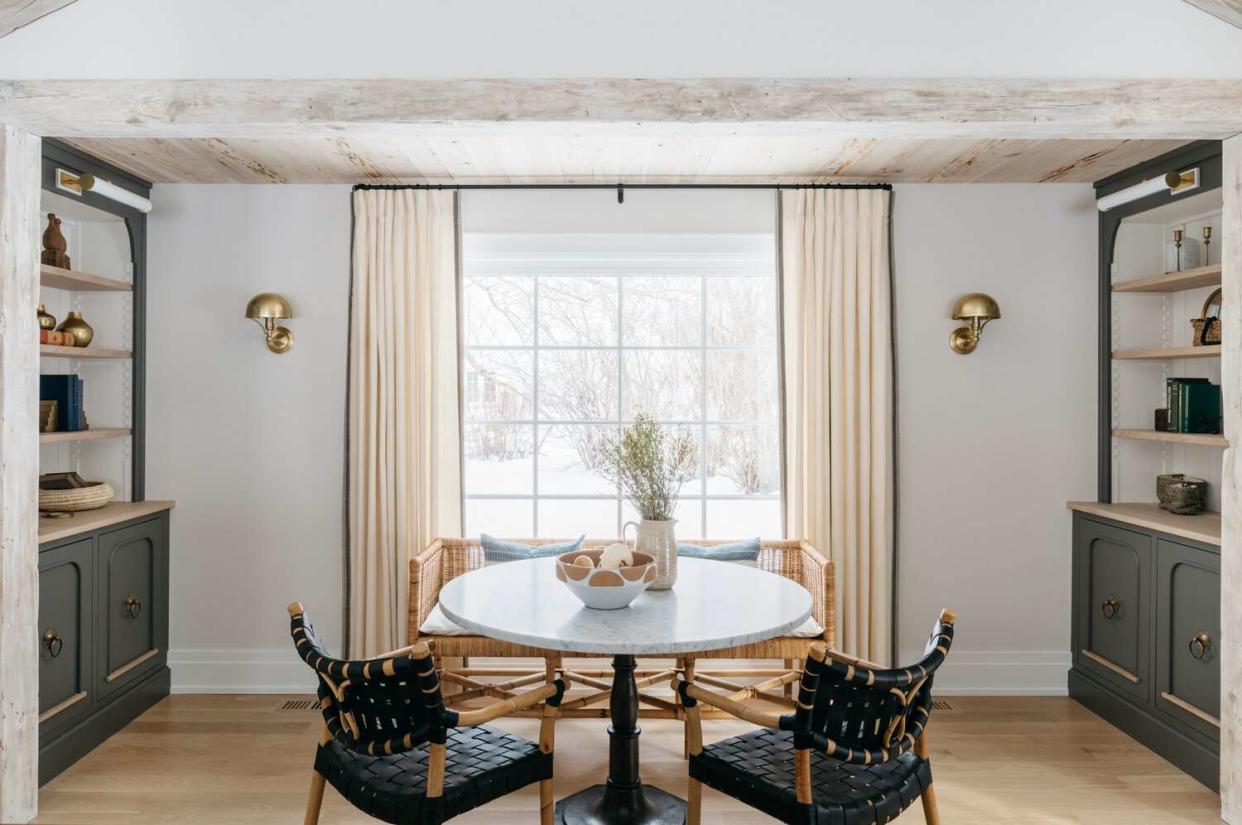
A vital part of getting the dining room ambiance just right is good window treatments. While priorities of dining room design tend to fall on selecting the right table, chairs, rug, and tableware, it's amazing what the right set of dining room window treatments can do.
Maybe your dining room needs a little color, or perhaps its current window treatment is weighing the whole atmosphere down. The following window treatment ideas for your dining room will help you curate the perfect window dressing—and you can say goodbye to your sad set of blinds.
Draw Attention to Taller Ceilings
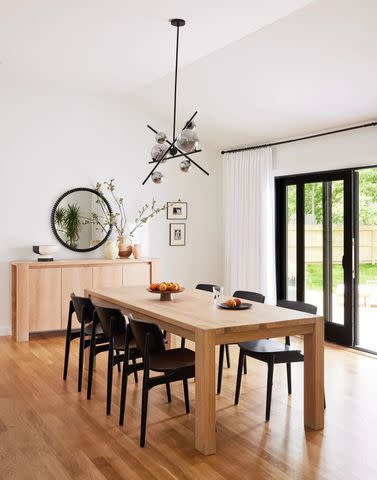
In dining areas with high ceilings, short, frumpy curtains can do a disservice to the room, making it feel cramped. One way of doing this is by installing window treatments higher than the window or door they're hanging over.
Tip
Keep them light and minimal in material and color to maintain that spacious feel.
Add Two Types of Window Treatments
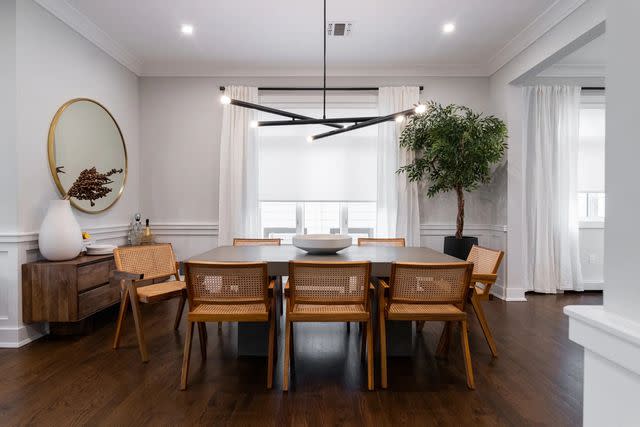
There's no rule saying you're beholden to just one window treatment. Dining rooms that receive ample natural light might need a little more than one set of curtains to do the trick. Diffuse rays of sunlight or annoying streetlights with a shade and curtain combo.
Create Maximal Contrast with Window Treatments
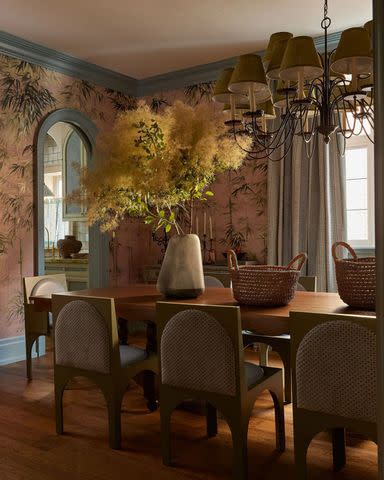
Never be afraid to go bold. Even with a vibrant, patterned wallpaper, a checkered print curtain or shades in a complementary color can do so much to elevate the look. It's also an opportunity to add more color aside from paint, chairs, and decor.
Pick an Elegant Pattern
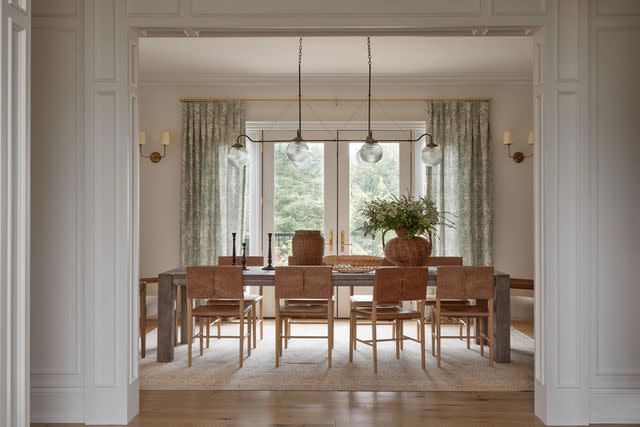
Patterns can feel busy in some rooms, but a subtle floral print or a sheer curtain can be an elegant upgrade. While it might be tempting to look at plain neutral colors for a dining room, expanding your parameters can result in a little more dimension and texture.
Install Half-Window Treatments
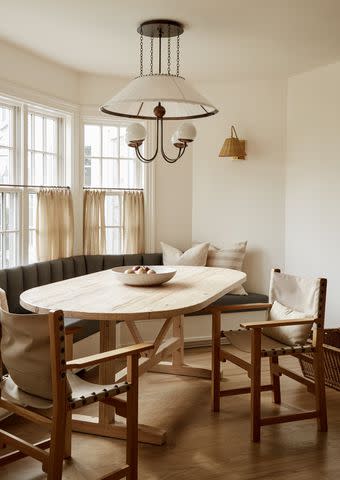
Nothing hits the spot quite like curling up with a coffee or a tasty meal in a dining area soaked with natural light.
To keep the room illuminated but diffuse any direct rays, treatments that only cover half the window are a great option. It protects the eyes but doesn't make a room feel dark.
Go for Sheer and Minimal
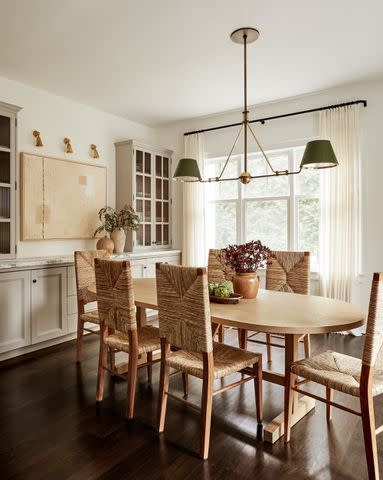
Sheer curtains are super unobtrusive. They offer the perfect happy medium, giving a little coverage without being overbearing.
Light white or cream versions keep color palettes feeling bright and breezy. This is useful in rooms that may be generally darker or smaller or look overcrowded with the addition of thick, velvety drapes.
Swap Window Treatments for Paint
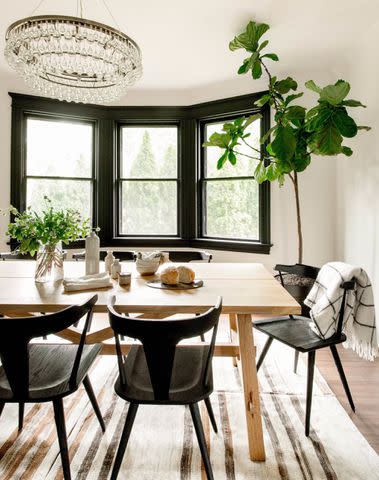
Perhaps you're leaning towards the idea of no window treatments but are unsettled by completely bare windows. One out-of-the-box idea that gives this area attention is painting the sills and frames. Your dining room windows will look well-styled without a single thread of fabric.
Match the Overall Aesthetic
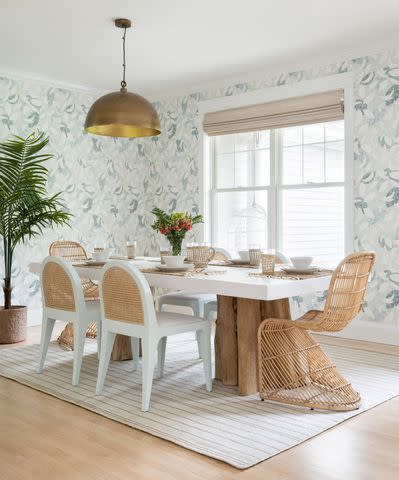
Standard white blinds work well in nearly every room, but they don't contribute much to the overall appearance. If you're dedicated to getting a cohesive theme in your dining space, don't forget to match the window treatment to your design aesthetic, too.
Block Out Overwhelming Light
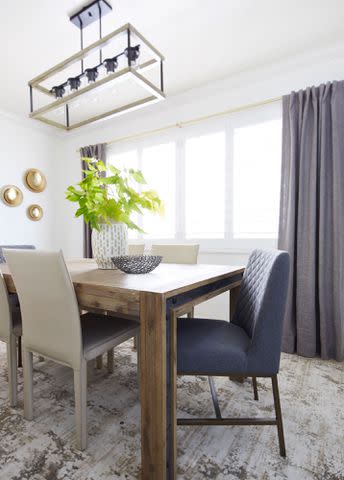
Some dining rooms are perfectly positioned, but for lunches or brunches that leave some folks at the table sweltering and shading their eyes, a thick set of drapes will do the trick.
Encompass a Room
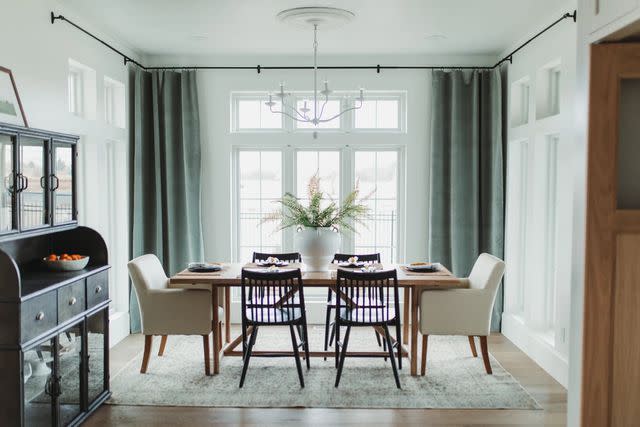
Rather than hanging up a shade or curtain over every set of window panes, a cool alternative is installing a rail around the perimeter of a room. It's a unique look that feels a touch regal and makes it easy to block out unwanted light in an instant.
Add Curtains That Match the Walls
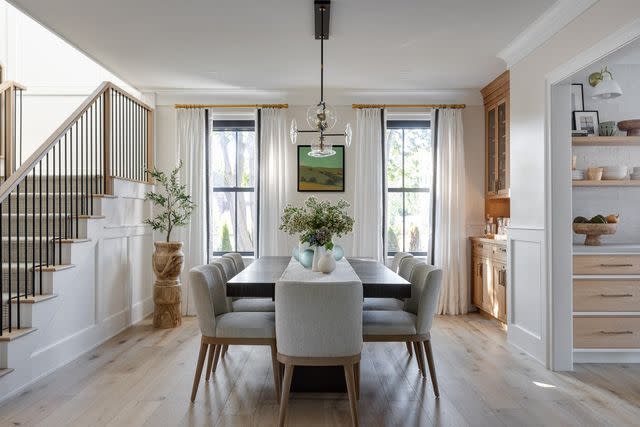
Curtains and drapes can feel heavy and easily suffocate a room (especially small dining rooms). To keep the space feeling open and light, choose curtains that closely match the colors of the walls. This way, when they're opened and pulled back, they blend right in and aren't as jarring as a dark set.
Hang Up a Roman Shade
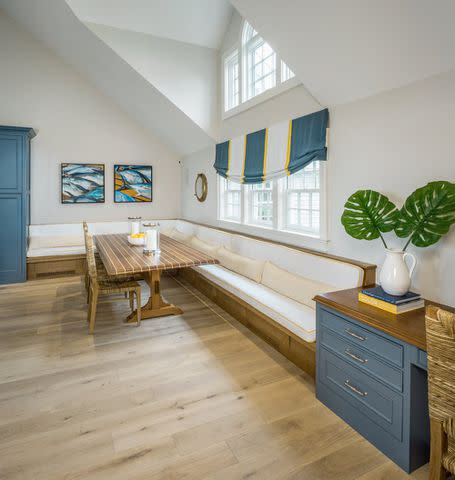
Roman shades are easy to use and perfect for windows that are shorter or designs that don't take up an entire wall. They're great for informal dining rooms, breakfast bars, and other eating areas that may not be laid out in the same way as a true dining room.
Opt for a Bright and Airy Look
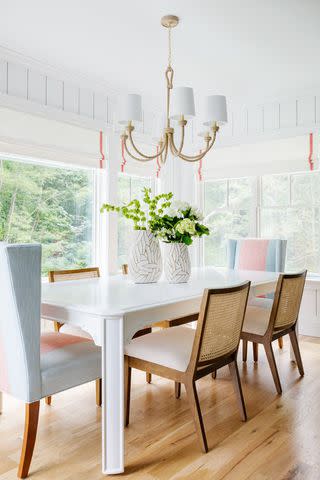
Gauzy chiffon curtains aren't the only way to get a breezy look. Roman shades and blinds can contribute to the same airy and open aesthetic. When deciding, look out for materials that are lightweight visually and physically.
Use Window Treatments to Make the Room Pop
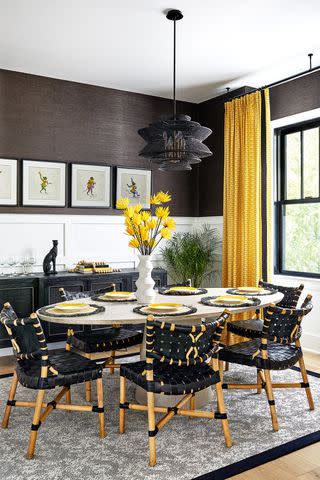
The color or pattern of a window treatment is almost as important as the type. Functionality is key, but so is style. Depending on the environment and the design style you're trying to emulate, a bright red set of drapes or a pale white chiffon curtain can both make or break a space.
Add Short Window Valances
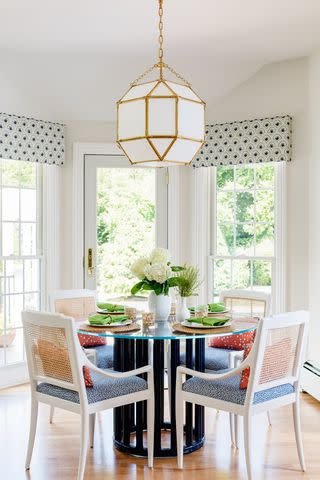
Count on valances to add character and keep light pouring through. With shorter versions, they can frame a room and add color. They're ideal for dwellers after bright rooms sans bare windows.
Use Reed Curtains for Some Coastal Flair
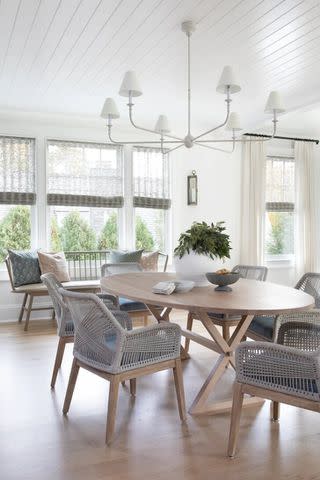
If a beach house is on your moodboard (no matter how far you actually are from the sea), you can bring a little coastal appeal to your dining room with the right materials. A reed-based set of blinds or Roman shades is earthy and has seaside written all over it.
Choose Two Different Patterns
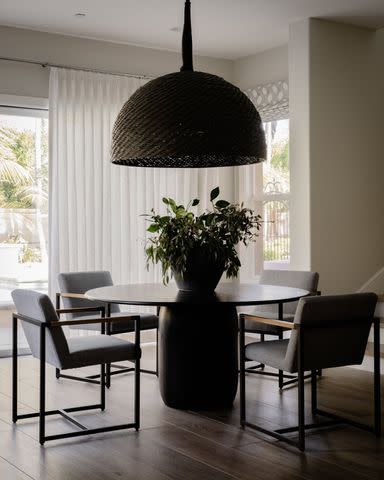
In the same vein as choosing two different window treatments, you can also select options that vary in shade, print, or color. This offers a little visual contrast between the two while remaining cohesive. It could be a plain curtain and patterned shade, vice versa, or a mix of prints.
Add a Solo Treatment to Each Window
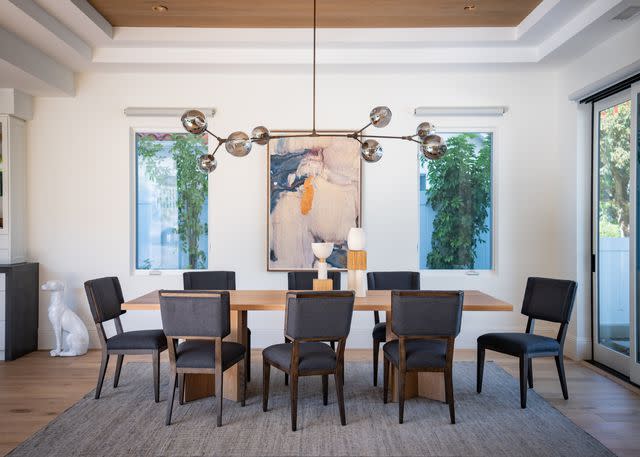
To have maximum control over the lighting in a room, separate blinds or shades for each window in a dining room is the best type of treatment. This way, diners can pull them down in areas that are lit too harshly or provide a little light during certain times of day.
Add Wispy Linen Curtains
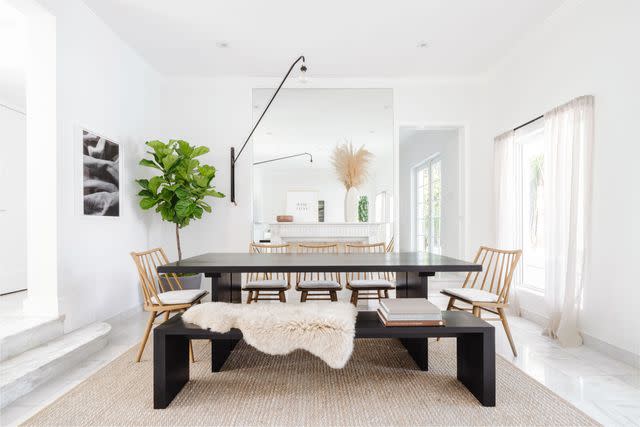
Linen equates to laidback and breezy. Curtains made of this organic and earthy (but sheer) material help promote this kind of aesthetic in a dining room. A little extra fabric pooling at the bottom feels dreamy and less perfectly cut and structured.
Choose a Roller Curtain Over Roller Blinds
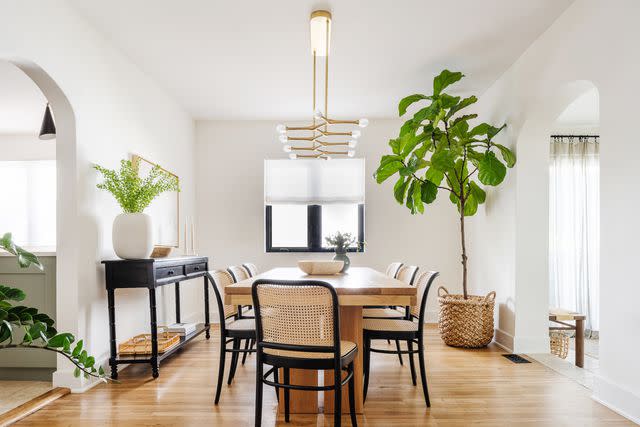
If you have a window in your dining room that's well suited to blinds but you aren't a fan of the look, opt for a curtain or shade in the same configuration. It possesses a little more style than the common metal, crinkling blinds.
Pick Shades With Flair
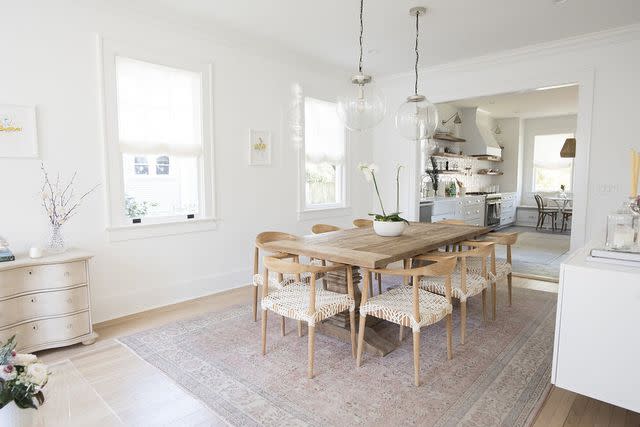
The smallest details can make a window treatment feel special. Rather than blinds, opt for shades that have intricate seams or that gather fabric in a unique silhouette when they're pulled up.
Opt for Easy Wooden Blinds
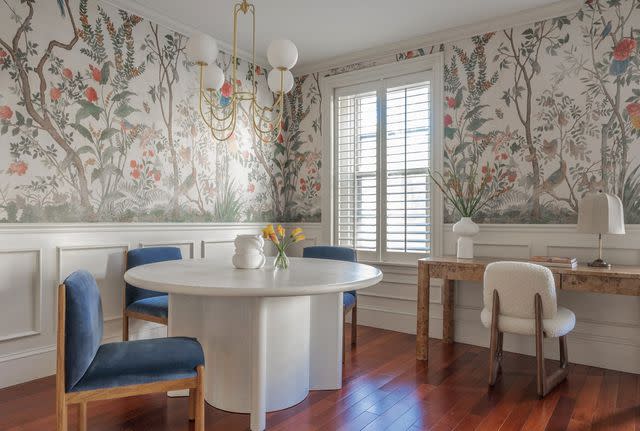
The wooden slats on certain styles of blinds are extremely easy to control. If convenience is the top priority, this is the perfect window treatment for a dining room. It works particularly well in contemporary, colonial, and traditional settings, but depending on the color can look great in most rooms.
Bring in Playful Patterns
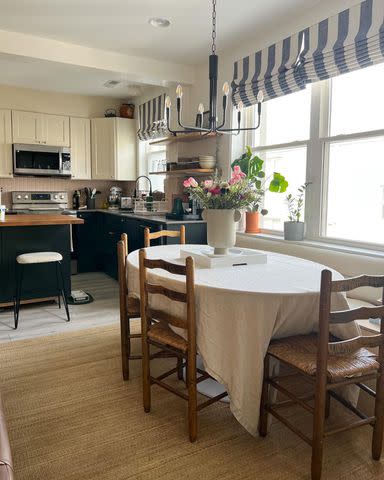
@dominiquegebru / Instagram
Dining areas with a neutral color palette are perfectly beautiful on their own, but if you're after a small splash of pizzazz a fun pattern or color could be just what it needs. Stripes, for instance, aren't too flashy, but break up subtler schemes nicely.
Add in an Accent Color
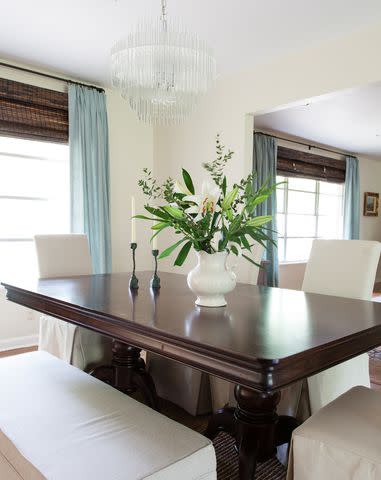
Dining rooms with the same color palette throughout can benefit from having an accent hue thrown into the mix.
One way to do so? Through window treatments of course. This could be an aqua curtain in a brown and cream-colored space or an olive green Roman shade in a gray dining room.
Curate a Serene Japandi Aesthetic
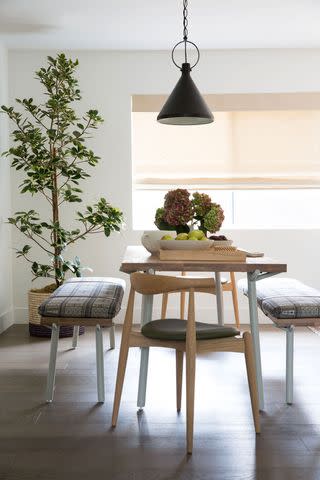
Japandi style is a popular aesthetic for a reason. It feels cozy and inviting but equally clean and pared back. This magical balance can be helped with a well-chosen window treatment.
A flaxen or beige shade, reed-style blinds, or a simple Roman shade continues that minimal theme and amplifies the warmth of the room.
Soften the Room with a Gentle Pattern
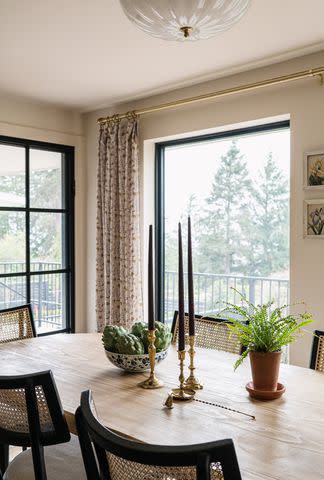
Dining spaces with sharp features accents, such as black window frames, candles, and furniture, can be softened with the help of a softer window treatment. It doesn't have to be as unassuming and subtle as white, but a tiny botanical print or a gentle wave pattern can help tone down stark shades.
Use a Window Treatment to Center a Space
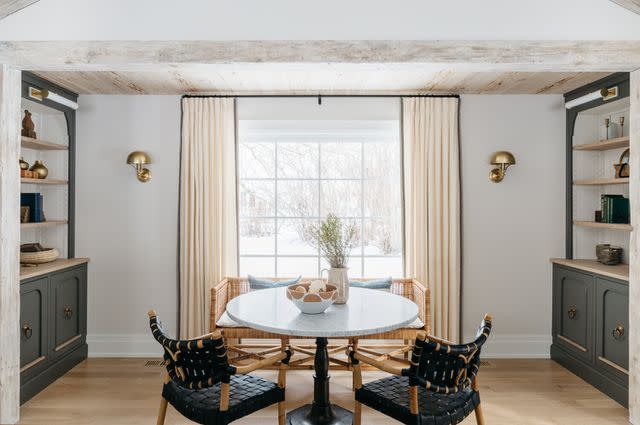
Symmetry can make a dining room feel breathtaking and balanced. Aside from creating equilibrium through chair placement, cupboards, and matching light fixtures, consider the window treatments. A centered shade or set of curtains can add a little boost.
Create Movement with Window Treatments
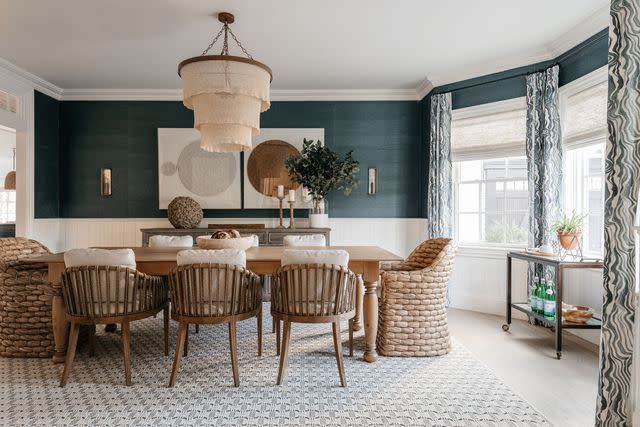
Having the knack for moving the eye around a room and not getting it caught on flashy fabrics or decor items is tricky. It's all about balance. A swirled pattern on the curtains can be just enough to keep the room flowing without making the space feel off balance.
Switch Up the Color Temperature of a Room
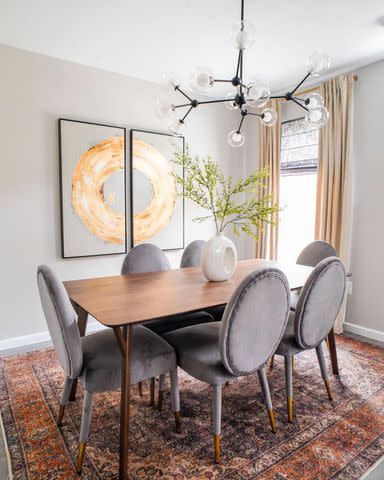
It's normal to stick to a specific color temperature when designing a room, but sometimes mixing warm and cool tones creates an eye-catching contrast. This could be a silvery gray dining room with gold curtains. Or even choosing two window treatments—one that's warm and one that's cooler.
Add to the Theme
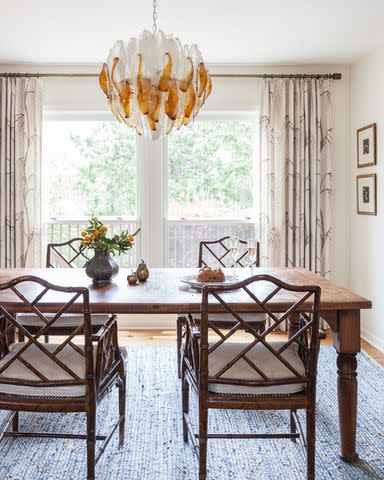
Dining rooms with a specific design style or theme can be supported with a snazzy window treatment. For example, an eating space with a traditional theme can include drapes with thick layers of fabric or something a little more global can have drapes that match the country you've pulled inspiration from.
Layer the Same Style of Curtain
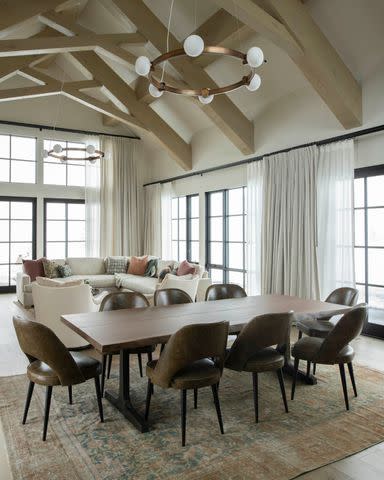
As previously mentioned, layering or mixing and matching is a fun way to jazz up dining room window treatments. Another way to do this is by using the same kind of curtain and orientation (i.e. vertical or horizontal) and layering them on top of one another. This gives a fuller look but still feels consistent.
Maintain a Relaxed Atmosphere
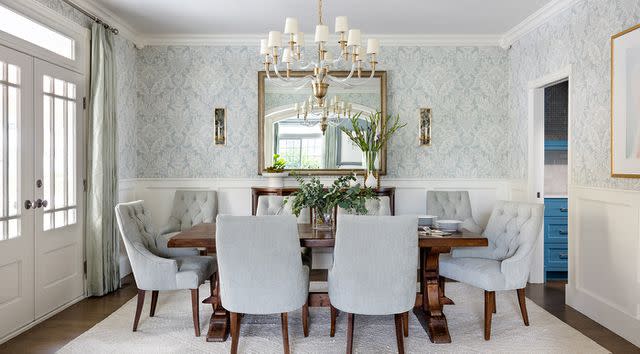
The environment in which you eat in can vary in how it feels. Some are ultra formal whereas others are cozy and comfortable.
If you're craving a dining room that feels polished but serene, keep the window treatment within the same calming color palette. Sea green, light blue, cream, lavender, and earthy green are all nice color choices that feel tranquil.
Err on the Side of Minimalism
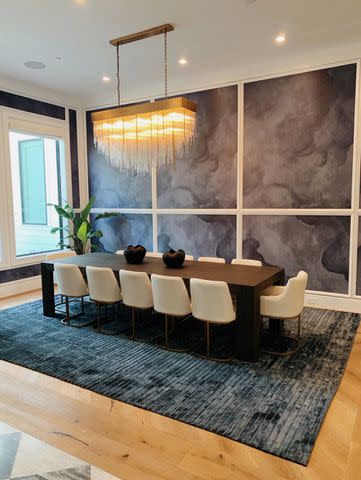
Glam dining rooms that may already have major statement pieces don't necessarily need window treatments that jump out from the wall. In these highly-styled rooms with massive chandeliers or artwork, sometimes the simpler the better when it comes to picking out shades or curtains.
Break Up White Space
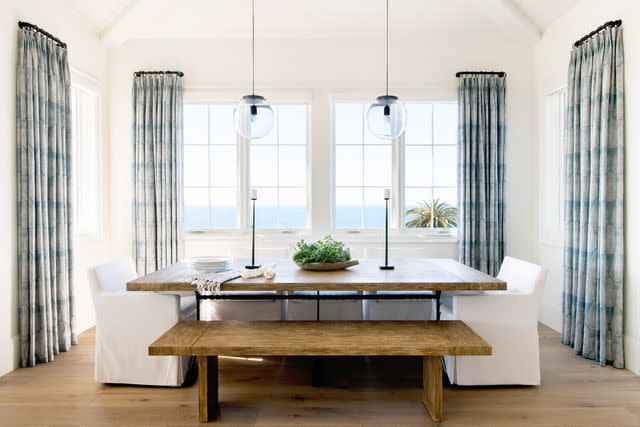
There's something to be said about the power of a bright, white dining area. It's uplifting, stylish, and a lovely atmosphere to dine in. That being said, light can feel much more intense when it has white walls to bounce around.
To break up the visual appearance of an all-white room and cut down on the eye-watering illumination, use curtains that match the theme but help tone things down.
Read Next: 40 Dining Room Colors for Any Style, From Elegant to Dramatic
Read the original article on The Spruce.

